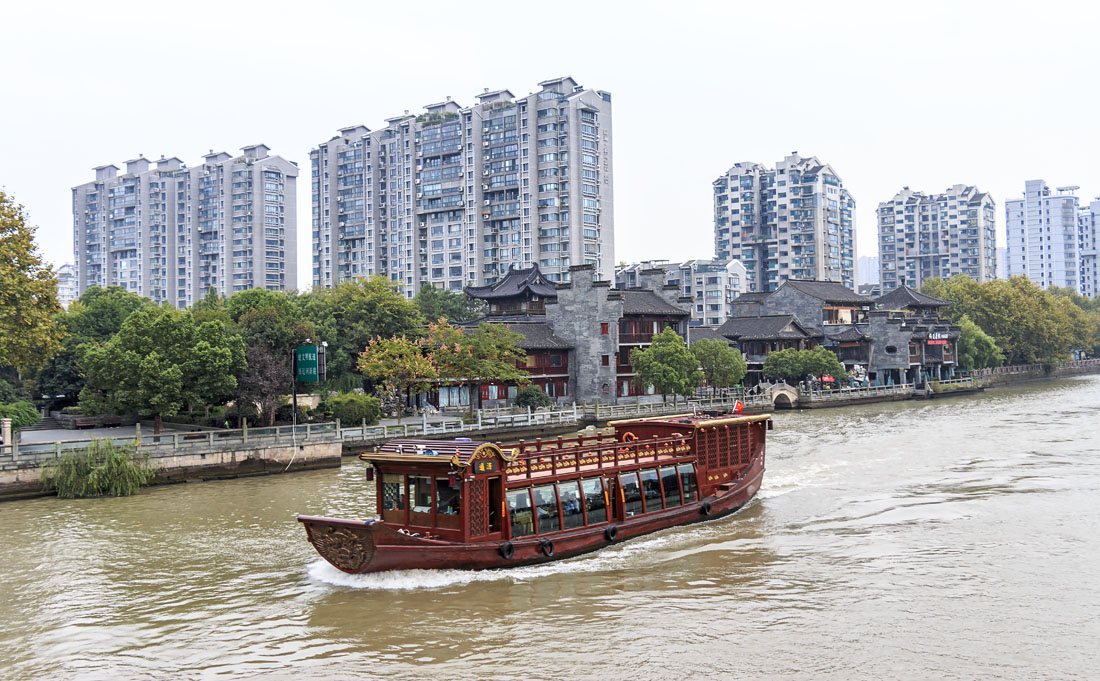Text and photos by Yvette Cardozo
August 2016, Vol. 20, No. 10
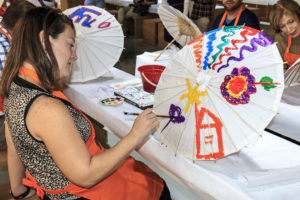
The umbrella painting, for me, was, well, a disaster.
The idea was to paint something pretty on a paper parasol. One guy in our group painted delicate branches and blossoms. One woman had a totally red umbrella laced with flowers.
Mine, sadly, looked like Godzilla meets the butterflies.
But no matter. The point was we were learning how local art is made. Over the course of our week in Hangzhou, China, between visiting pagodas, temples, the famous West Lake, a wetland park and eating more Chinese food than I’ve encountered in a while, we learned a bit about life there and got to try more than a little of it.
Back in 1983 when I first visited China, it truly was a trip to another planet.
In the early years, the emphasis was on showing us daily life … visits to pre-schools with four-year-olds trying to sing a welcome song in English, visits to factories, to Chinese medicine hospitals, demonstrations of acupuncture. And even a visit to a prison.
Since then, I’ve made some half dozen more trips. And EVERY single time, China has reinvented itself.
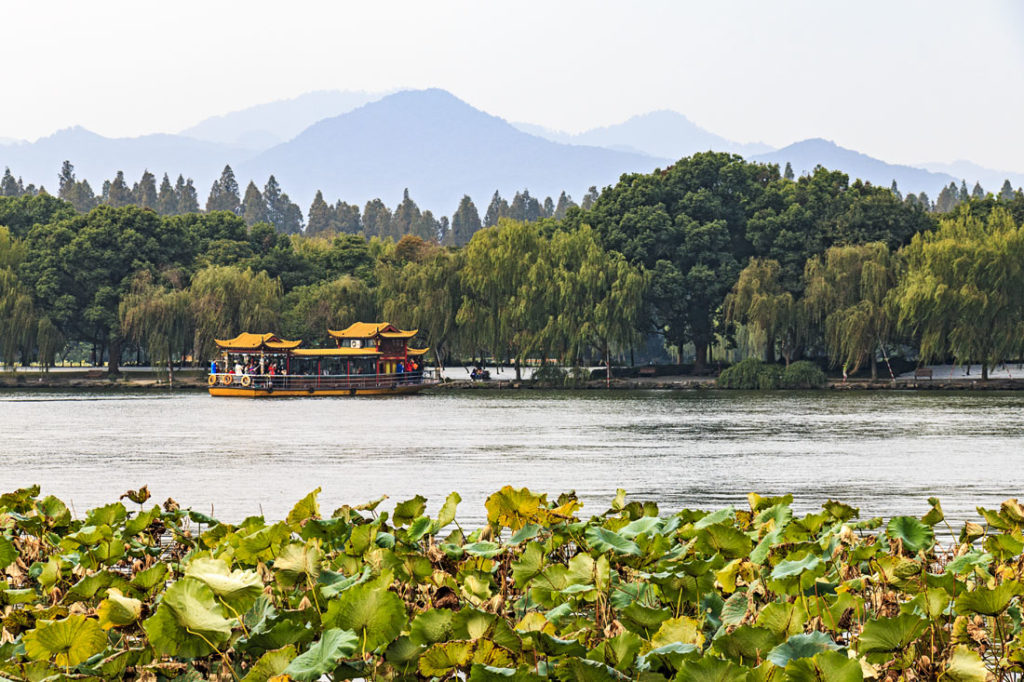
If you come, you probably won’t be visiting preschools or prisons. But you can get a lot of hands on activities to learn about culture and history.
Hangzhou in southeast China, only 45 minutes from Shanghai on the Bullet Train, is a natural beauty. Its shining glory is West Lake.
Water lilies line the shore. Far off mountains frame it like, yes, a Chinese painting. And should you venture out in early morning, you will find the locals doing graceful tai chi and sometimes, painting calligraphy on the sidewalks with giant brushes dipped in water.
What else? The Grand Canal, the world’s oldest canal, begins at Hangzhou and ends 1,200 miles later in Beijing. Silk, tea and porcelain go back thousands of years here. And there are workshops, which, along with painting parasols, include visiting tea plantations, learning how to carve a chop and more.
So, of course, my friends and I went to pick tea. And more importantly, learned how to brew it properly.
Meijiawu Tea Village sits at the west end of West Lake. Once poor, it now is famous for its Longjing (Dragon Well) green tea.
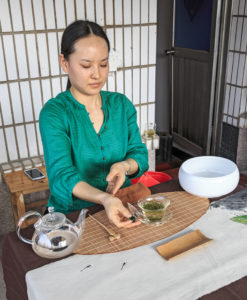
“We pick only the very young leaves,” said Yuan Le Ha, holding a delicate yellow tea blossom. She pointed to the tiny brand new leaves. These would be cooked … yes, cooked … in an electric wok. Then up to the roof for sun drying, another session with the wok, more sun and, voila, green tea.
You do NOT steep green tea in boiling water, we were informed. Wait a few minutes. The best temperature is around 180 degrees. The first cup is for sniffing, not drinking. Drink the second. And you do NOT steep green tea covered. “That will destroy the nutrients,” Le Ha added.
Le Ha followed with a graceful tea ceremony where she warmed the glasses, prepared and poured us tea. Well, sigh, the stuff looks like cooked spinach and, honestly, to me, tastes like cooked spinach. But everyone else in the group loved it.
And the beautiful tins filled with tiny green leaves make great gifts.
The session I loved most was learning how to make a chop, also called a seal. Chops have been around in china since 1600 BC, eventually spreading to other Asian countries. Initially used only by emperors, lords, and samurai warriors, over time they made their way down the social ladder to everyone.
They can be made of anything from metal to wood but mostly soapstone, since it’s easy to carve.
And so, we climbed well worn, rough stones to a top floor at Xiling Seal Engraver’s Society, which looked more like a temple (complete with pagoda) than a school.
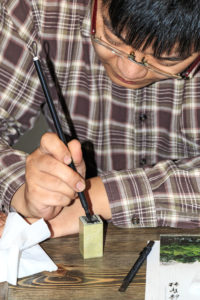
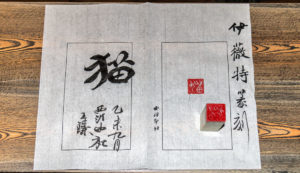
Teacher Wang Zhen has probably carved 1,000 chops over the past 13 years and while in his hands, it looks swift, graceful and easy, for the rest of us, it really was not.
We sat at a long table where each person had a slender block of stone, pen, ink, tissue thin paper, small chisel and a white glove to hold our stone.
We drew the character on the paper with ink, transferred it to the stone and then chiseled the pattern into the stone. Mine, which says cat, looked like so many messy scratches instead of solid, bold lines. But I love it.
No trip to China is complete without temples and we got our fix gloriously at the Lingyin Temple, a Buddhist complex. It’s some 400 carvings cut into limestone dating back nearly 2,000 years. The place is huge, with grottos, temples, pagodas, libraries, museums and caves.
The star of Hangzhou, though, is West Lake, which was named a UNESCO World Heritage Site in 2011. It has three causeways, numerous islands, plus pagodas, tea houses, temples and gardens.
Tour boats nicely keep to an ancient style, each looking like it stepped from the pages of history. And all this is framed by water lily plants and soft far off mountains.
Meanwhile, if the water and light show, “Impression West Lake” is performing (mid-March to January), do NOT miss it. The director is the same guy who put together the opening ceremony for the 2008 Beijing Olympics.
It’s a love story … love found, love lost, war, sorrow, people transforming into swans. Someone said it’s a Chinese version of Romeo and Juliet. More than 300 performers gracefully glide through ankle deep water on a submerged stage against colored lights, flying feathers and beautiful Chinese houseboats.
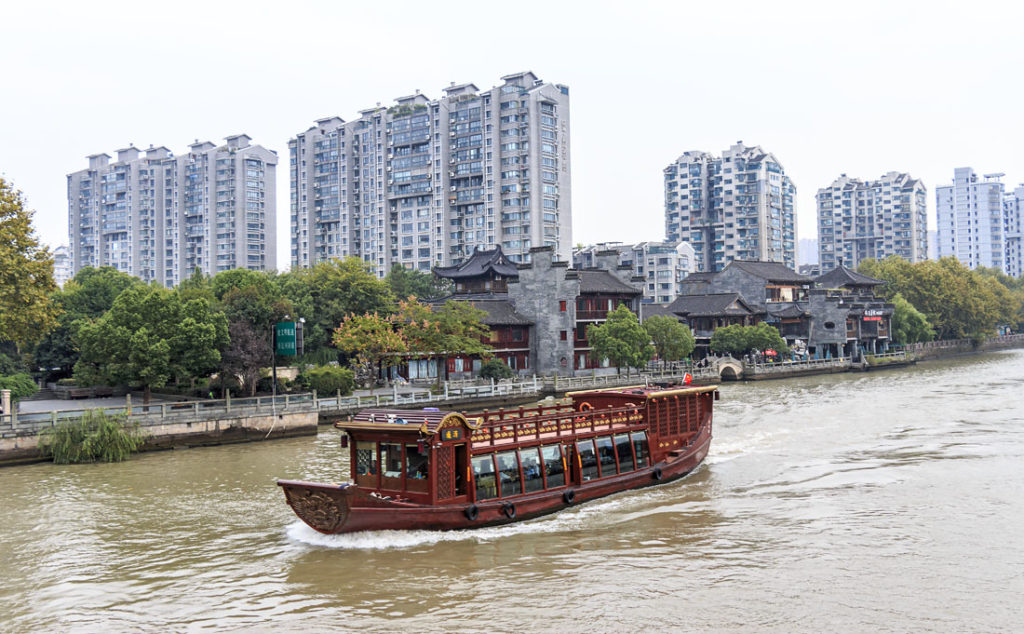
We also rode down the Grand Canal, built by hand 1,500 years ago and stretching 1,200 miles between Hangzhou and Beijing. Cargo boats drag long loads. Ancient bridges gracefully span the water. New and old homes line the banks. And yes, there are shops and more than one coffee house.
A word, here, about shopping. Prices vary widely, as does quality. One of my best buys in silk was at XiXi Wetlands Park. I got a gossamer light scarf the size of a tablecloth for $6.
One night we also wandered from our hotel down the street to a silk shop (there are MANY) and found a selection that included all silk, silk with cashmere on one side (keeps the shawl from slipping off your shoulders) and all cashmere. Prices ranged from $4 to about $30.
And, of course, there was the Wensli Silk Museum, where you can buy a silk embroidered “painting” for a mere $250,000, a Marc Rosier scarf for $450 or, closer to reality, a signature Wensli scarf for $150. That’s in addition to the blouses, shirts, nighties, robes, pillows, ties and, yes, a silk iPad case.
Our last day, we hit Qinghefang Ancient Shopping Street. It recreates a bit of old China, with a football field-long street of shops, stands and just about any trinket for sale from tea to scarves, spices, toys, bone combs, fancy fake designer sunglasses, snacks and my favorite, the guys pounding sesame seed paste into sheets of candy.
There’s little left of the China I saw in 1983. But today’s China is still absolutely fascinating.
INFO
Best time to visit Hangzhou is spring or fall. Summer temperatures can hit well over 100 degrees. Winter is cold and can be rainy. Peak time is spring (mid-March to early June).
Several airlines fly nonstop (though not daily) flights from select major US gateways to Shanghai, the nearest major airport to Hangzhou. These include Delta, United, American, China Eastern and Hainan.
From Shanghai, it’s 45 minutes by Bullet Train (at speeds up to 155 mph) to Hangzhou.
The food, by the way, will be familiar to anyone who has eaten in a good Chinese restaurant in the US.
China blocks virtually all social media. You will not be able to access Facebook, Instagram, other social media programs or anything connected to Google. Success with other sites can be spotty.
Some travelers (and most people in China) get around all this by using WeChat, a free messaging and calling app. Other people use VPN, which creates a virtual private network.
There are banks and ATMs for changing money. For the ATMs, though, you need a credit card with not only a chip but a pin number. For the banks and at hotels, you will need to present your passport. And if you are exchanging US bills, they must be crisp and new … no folds, wrinkles, markings, tears. Get brand new bills at a bank.
For information on Hangzhou: Http://en.gotohz.com/
For information on tours: Asia Luxe Holidays: http://www.asialuxeholidays.com/
* Meijiawu Tea Village – http://www.visitourchina.com/hangzhou/attraction/meijiawu-tea-village.html
* Xiling Seal Engraver’s Society – http://www.china-tour.cn/Hangzhou/The-Xiling-Seal-Engraver-Society.htm
* Workmanship Demonstration Pavilion (parasol painting, embroidery, paper cutting, wood carving and more) – http://e.gotohz.com/wheretogo/attraction1/201408/t20140813_127664.html
* China Photo Diary: https://goo.gl/photos/iZ6vJ9Jz84dfUifT6

